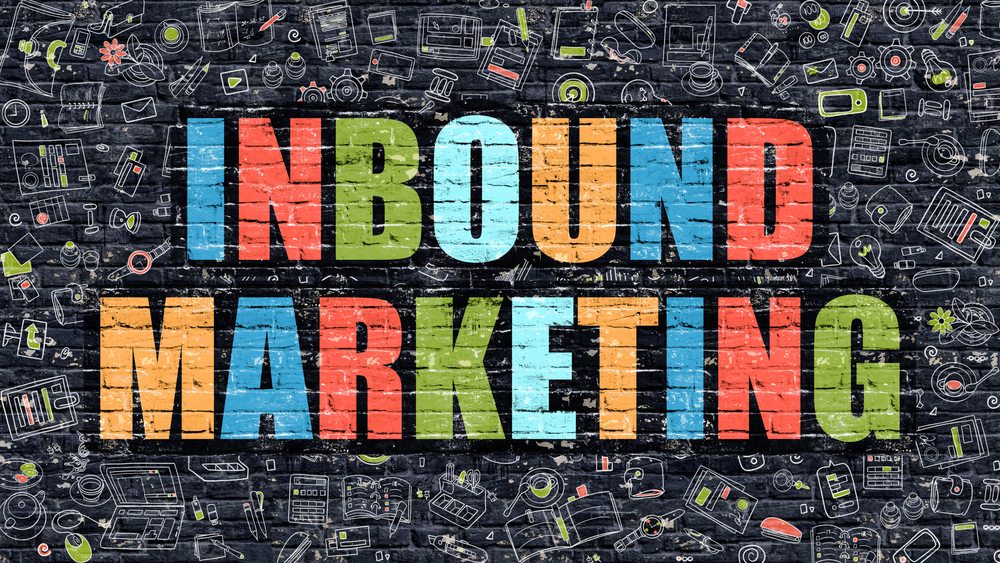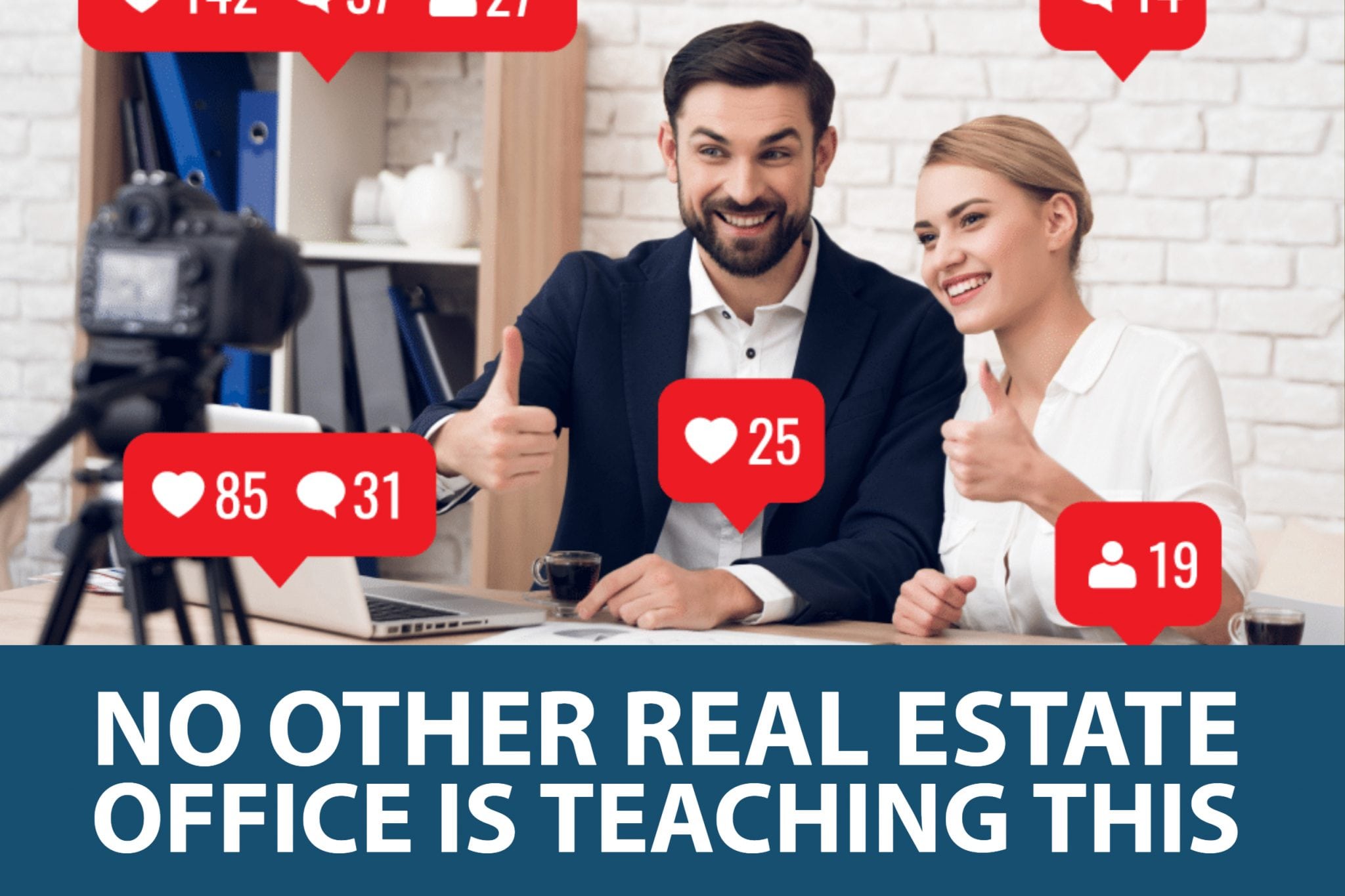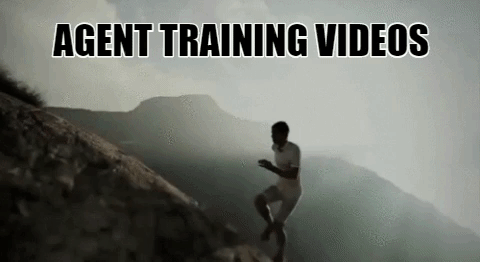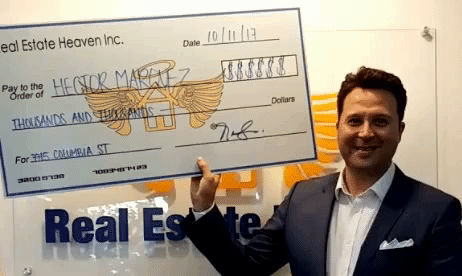The Basics Inbound Marketing For Real Estate Agents

Inbound marketing is any effort that generates phone, email, chatbox, messenger, and/or text message inquiries of your services. In other words, the prospect comes to you. Inbound marketing is not new, and technological advances have made communicating with people easier and more profitable than ever, but it will take significant effort.
Disclaimer
Inbound marketing is a passive strategy that takes a lot of effort. It’s a slow ramp up. Most people give up when they don’t see immediate results, forgetting that they themselves have to see a message a minimum of 7 times before they make a buying decision. “Old School” real estate Brokerages will have you believe that the only way to prospect is on the phone, and while this a tried and true method, it is certainly not the only method. Add the fact that cold calling is a difficult business model to scale, and even if you outsource it, you’ll need to be good at it first in order to be able to train a team of people to do it for you. I’m not knocking it-I still prospect and use my own team of cold callers, but it isn’t for the faint of heart. It’s one of my many tools in my arsenal.
The best of the best agents use a combination of both inbound and outbound marketing. My recommendation is to start with outbound marketing that is supplemented by inbound marketing. Advertising should be an accelerant to your business, it should not the only thing you depend on for customer acquisition.
Internet – The Great Equalizer
The Internet changed our profession forever. Consumers now have access to all kinds of information that was previously limited to professionals, and they can parse that information without having to sit through conversations with overeager salespeople. Consequently, the flow of the entire process has been reversed. Suddenly, an effective marketing strategy wasn’t just about finding the right people–it was also about making it easy for the right people to find you. Instead of pushing your message out, you’re drawing your clients in–hence, inbound marketing. Still, this process presents its own challenges. Outbound marketing can feel like pushing a boulder up a hill, but at least you control which direction you’re taking it. With inbound marketing, you can create the path, but the consumer ultimately decides which direction to go. The task, then, is to build a path that’s smooth, straight, scenic, and most importantly, well-maintained.
Google Pay Per Click
In a galaxy far, far, away existed a younger version of myself that believed the minute I put up a website on the Internet people would find it. Low and behold, it didn’t take long for me to realize that I wasn’t getting any visitors. So I did, what you probably have done, or are doing, and I paid for advertising on Google using pay per click. This was very expensive. We were spending over $72,000 a year on PPC advertising with very little immediate return. The average incubation period of an internet real estate leads is about 6-8 months with some taking as long as 24 months. Most are in the “I’m thinking about it” phase requiring extensive follow up. This is completely different from a retail PPC campaign where a consumer is more likely to make a purchase on a low ticket item (when compared to the cost of a home or impact of relocating of a family). Now this doesn’t mean PPC doesn’t work, but a new agent will probably not have the capital or the patience to wait up to 24 months before their first transaction.
Then Came Social Media
Social media was every marketers fantasy. Build a network and spread your message for free. It. Was. Glorious. That is, until the business of social media grew up and started charging us to “boost” our messages in order to be seen. Make no question, boosting is just another version of PPC. Social media is now pay to play, and here’s the worst part: we willingly and at no cost to them give them all of our stories, our photos, and our videos to share thereby eyeballs on their sites ultimately making them for valuable for advertiarra. Herein lies the vicious cycle. We believe that we need to promote our content where all the eyeballs are in order for it to get seen and in doing so continue to feed Audrey II (the monster).
Lately I’ve seen a deluge of posts where people are now trying to get interaction taking polls (which business card is better A or B), asking questions about where your dream vacation would be, inquiring about where you met your spouse, and on, and on, and on. I’m not only annoyed by these posts, but I’m insulted by all the insincerity. These people don’t really care about our responses in as much as they have been duped into thinking that the only way to avoid paying for their posts to be seen is to feign interaction. This is a pure case of sheeple trying to adjust to a business model that is entirely outside of their control.
Facebook has repeatedly said it wants us to stay connected to the people we care about. I’m calling bullshit. This is simply a sugar coated way to say it wants us to pay to promote our content on a medium that was once free but has become littered with nothing but marketer messages. They have every right to do this. To quote Tupac – “I ain’t mad ‘atcha.” Truth is, if you’ve been relying solely on FB to get your message out, you have every reason to be scared (unless you’re ready to pay), and should finish reading this entire post. Word. For. Word.
Inbound Marketing Commandment Number #1: Get Your Own Website.
If you don’t have your own self hosted site-GET ONE. Get a WordPress site. I know there are others like Wix, Weebly, or Squarespace. I’ve tried them all. Go with WP. I recently wrote an entry on why most real estate websites suck, including the $99 per month website your franchise is trying to sell you. Trust me. If you ever leave your real estate brokerage, and statistics show that every 2-3 years you will, you’ll be able to take the site with you and not lose the content. Plus, this way, big brother broker can’t spy on your leads.
Picking a URL for your website is important. I’m not just talking about securing www.companyname.com as the address of your main site. Many people will simply use their first and last name as their domain. There is nothing wrong with this, but you’ll have to work extra hard to build relevance for what you will want to rank for. For instance the domain www.TalkToPaul.com doesn’t do much to tell the consumer what the page is all about. More importantly people aren’t doing a search for the phrase TalkToPaul. Don’t let your ego get the best of you. A domain such as www.BeverlyHills90201realestate.com is pretty self explanatory, and more importantly, is easily recognized by Google in terms of its relevance. The flipside to this equation of course, is that you are definitely narrowing down your niche, which in real estate isn’t necessarily a bad thing. Before you can conquer multiple territories, aka farms, you need to be able have at least one area of specialty. There are plethora of domain extensions so you’ll be able to find and register whatever domain you’d like. A .com address is the best option, but you can rank a .net, .org, .me, or .biz site just the same. Don’t believe me? Ask your kids if they’ve ever played the game slither.io.
Commandment Number #2: Keep Your Content For Thyself
Stop giving all the social media sites your photos, videos, & written content. Just stop it. I’m not saying don’t use it. I’m saying use it smarter. All your content should be on your site. Then share the links to the blog entries, the photo albums, and the videos that are hosted or embedded on your site through social media thereby forcing the viewer to leave FB, Twitter, Instagram, or LinkedIn and land on your site. Most social media apps now have browsers built in to them, so the end user may not even realize they’ve temporarily left the app. It takes a little extra effort to share your content this way but it pays off in the end. Your content is worth millions of dollars, perhaps even billions when you think about it. Most social media sites are nothing more than curators of content supplied to them at no cost by their users and they generate billions of dollars this way. Chew on that.
Think of the Internet as one big stack of webpages. One of the ways search engines help users find what they’re looking for is by constantly stacking newer web pages on top of older ones. Creating content becomes significantly easier when you share your photos and videos on your own site versus FB. By creating new content regularly, you can ensure that your website will stay near the top of the stack.











